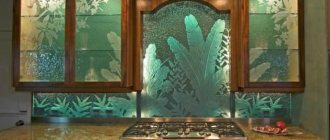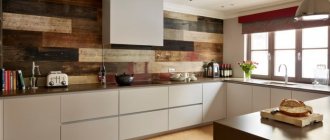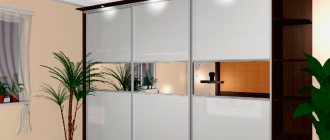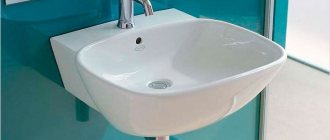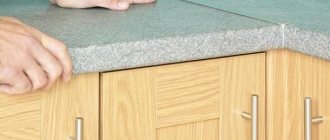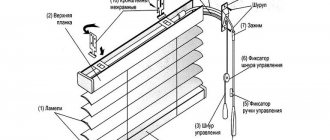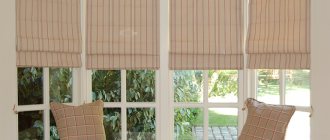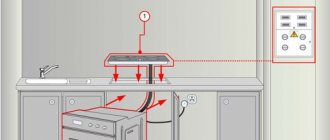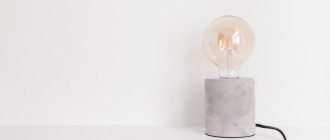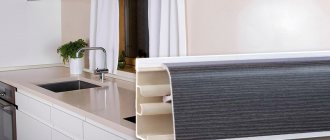What should an apron be like?
An apron, as an interior element, not only decorates the space between kitchen cabinets.
It is designed to protect walls from liquid, grease, dirt and soot. In order for the coating to fulfill its function, it must be made practical, easy to clean, resistant to high temperatures and chemical detergents. The wall cladding near the work surface should have a pleasant appearance. Nowadays, aprons are made of ceramic tiles, mosaics or glass. For those who want to make a renovation that will last forever, cladding made of natural stone, metal or brick is suitable.
Disadvantages of MDF
Before you start purchasing and installing an MDF apron in the kitchen, you should consider its shortcomings.
Perhaps they will become an obstacle to purchase. So:
- Negligence in care will affect the MDF board. She will be led or bent. The same applies to high humidity - you cannot mount MDF panels directly near the sink - it is better to install tiles there. The stoves must be equipped with hoods to prevent drops of condensation from settling on the surface of the apron.
- Material is flammable. This is important if the owners are planning to completely cover the wall from the edge of the set to the edge. Mandatory external control is required if a heat supply source is mounted on the wall - a gas boiler, for example.
The disadvantages are serious and should not be neglected. If, nevertheless, there are no prerequisites for future damage, then it is worth trying to create something new in the interior.
Dark furniture with an original pattern on the apron looks beautiful
How to secure a plastic apron in the kitchen with dowels: instructions
Installation using the mentioned fasteners should not cause any problems. This installation method is best used on panels that have a pattern on them, as the same adhesive may cause some damage to the image. It is not necessary to move the furniture set during the work. Installation should be carried out according to the following plan:
- Use a drill or hammer drill to make holes in the wall and apron for the dowels. At this stage, a building level will be useful, with which you can make accurate markings.
- Clean the surface from any dust that has formed.
- Place the prepared apron against the wall and secure it with dowels.
- Mask the caps with furniture plugs, the color of which should match the plastic.
An apron installed in this way can be easily dismantled: to do this, you need to unscrew the dowels and carefully remove the product. In addition, dowels (concrete screws) or anchor bolts can be used for fastening.
Varieties
The following materials are used in the manufacture of plastic aprons:
- PVC panels, the standard width of which is 25 cm and thickness - 0.8–1.2 cm. They are produced in lengths from 2.6 to 3 m. Their main feature is the presence of special locking fasteners on glossy or matte parts for seamless connections. Therefore, with proper installation, you can independently make a kitchen apron for the kitchen on the wall in the form of a monolithic surface from individual elements. The main thing is that there are no cracks, otherwise water and debris will get into them. PVC is used to make plain, thermo-film-coated or varnished aprons.
- ABS sheets are single-layer plastic materials decorated with photo printing or designs. A finished kitchen apron made of ABS plastic is usually produced in dimensions of 200 x 60 x 0.15 cm. Its main advantage is its high resistance to mechanical damage and the absence of deformation during bending. Aprons made of sheet plastic are produced in a wide variety of designs, since high-quality images are applied to the surface of the product. In addition, you can order an apron with an original design.
- Cast polycarbonate is a refractory plastic material that looks like ordinary glass. The surface can be glossy or matte. Kitchen aprons made from this material are sold ready-made. Images imitating tiles, decorative stone, brick and other materials are applied to the inner polycarbonate coating. In addition, such an apron can be equipped with lighting elements (for example, LEDs) that will highlight the product.
Taking into account the size of the kitchen wall that needs to be tiled, you need to calculate and select the appropriate model.
Wall mounting methods
The method of fastening will largely depend on the weight of the apron or its individual elements. Here are the different possible options:
Glue
One of the most popular is liquid nails. Liquid nails can be used to glue plastic, fiberboard, lightweight MDF panels, ceramic tiles and mosaics, artificial stone, and mirrors to a flat, grease-free wall. The main thing is accuracy: the glue should not be applied too close to the edge of the panel.
Installation of sheathing
This method is used when there is concern that the panel may fall due to its own gravity. The second reason is that the wall is too uneven. Third, it is much easier to dismantle and replace with another apron using sheathing rather than liquid nails. Both fiberboard and PVC panels can be mounted on the sheathing. But one of the heaviest materials is a thick MDF board.
Using lathing, you can install panels in several ways:
- installation of wooden beams to the wall (using self-tapping screws or glue), fastening panels to the timber with glue;
- fastening the panels to the timber using self-tapping screws or dowels;
- installation of an aluminum profile as a beam, fastening the panels to the profile with self-tapping screws.
Let's take a step-by-step look at how to install an MDF model with your own hands using self-tapping screws.
- Before starting work, the furniture must be moved away and the wall carefully leveled.
- A frame made of timber and metal profiles is mounted according to the level. The thickness of the timber should be no more than 0.5 cm so that the apron fits behind the tabletop.
- The wooden beams are treated with bioprotection.
- The apron is applied to the wall and markings are made for the holes. Holes are drilled on the MDF board - blanks for self-tapping screws.
- Only after this the apron is again applied to the wall and tightened with self-tapping screws. They begin to screw in the screws little by little: first in the corners, then closer to the center.
- For aesthetics, you can install caps on the screws.
Standard fasteners
Suitable for not too heavy panels. Loops are glued onto their reverse side using a suitable method (available in different versions). Markings are made on the wall where the hooks will be screwed under these loops. Using a drill, holes are drilled into which dowels with hooks are inserted. After which the panel is hung.
If hooks are made only along the top edge, then the panels will hang at different levels from the wall - the gap will be larger at the top, and the bottom will fit snugly against the wall. Not very beautiful, but easier to install the apron. Hooks in two rows will make the appearance more harmonious and attractive.
Using furniture glass holders
There are a great variety of them sold: in metal, plastic. To attach the entire apron you will need a large number of holders. In addition, it is worth considering that they will not withstand heavy material (thick glass or MDF) and will be visible after installation. But this is not a problem at all: nice mounts do not attract unnecessary attention. But the mounting method is simple - the holders are fixed on the wall (with glue or screws), and the apron is inserted into the holders.
Metal U-profiles or U-profiles
Such profiles are installed at the top and bottom of the apron, after which the wall panel is simply inserted and pushed forward, like a wardrobe door. In this method, the main thing is a clear calculation, otherwise the light canvas will warp, and the heavy one simply will not fit into the grooves.
Laying tiles and mosaics with cement mortar
The method is considered outdated, but properly installed tiles will last for decades. This method is chosen mainly because the cement itself is cheap compared to glue.
To learn how to install an MDF apron in the kitchen, see the following video.
Types of kitchen aprons
Installing an apron in the kitchen with your own hands is not the most difficult job; even a beginner can handle it. But in order for the installation to be carried out efficiently and no rework is required, it is necessary to know the features of fastening different types of cladding.
How to install from MDF
MDF boards have become an inexpensive, although not as durable, alternative to glass, tile or stone. MDF (fine fraction of wood fibers) is easy to install on any surface, you can run electrical wiring underneath it, and using photo printing you can choose absolutely any print for your kitchen interior.
But at the same time, kitchen aprons made of MDF under the influence of heat from the stove, household chemicals and prolonged contact with water can become deformed and move away from the wall. In addition, this material is flammable, so avoid its proximity to open sources of fire.
If you decide to mount an MDF apron in the kitchen, then there are two options for mounting directly on the wall using liquid nails (glue for plastic or wood), or using self-tapping screws. MDF sheets are lightweight, so polyurethane-based adhesives are quite capable of fixing the cladding on a horizontal surface. Self-tapping screws will hold more securely, but they will leave marks on the finish. Therefore, everyone decides for themselves which type of fastening to choose.
In addition to wall fixation, MDF sheets are installed on lathing or guides.
MDF apron: installation methods, advantages and disadvantages
An MDF apron is usually made to match the color of the furniture or countertop.
As a rule, such aprons are made to match the kitchen furniture or worktop, thus creating an imitation of a single surface. No one excludes the possibility of purchasing panels that contrast the tone of the furniture. Using photo printing, MDF panels can be decorated with various designs and patterns.
The main factor that influences the choice of this option is the low cost of such aprons in comparison with tiles, tempered glass, and porcelain stoneware. In terms of its performance properties, MDF is not inferior to natural wood, and in terms of strength it even surpasses it. In addition, MDF boards are protected from the effects of fungus and mold. Also, the advantages of such an apron in the kitchen include the simplicity of installation work and the absence of the need to use special tools. MDF panels can be mounted on any surface; there is no need to make the walls perfectly flat. In addition, such an apron is easy to replace.
https://kuhnyamoya.ru/youtu.be/PriooPaTp6Y
The disadvantages of such aprons include:
- instability to chemicals and water, which over time will negatively affect the appearance of the apron;
- frequent separation and sagging of panels;
- MDF is not a fire-resistant material, so it can catch fire, releasing toxic substances.
Installation of MDF panels on the surface is done using “liquid nails” or self-tapping screws. Before this, it is necessary to carry out work on marking the surface. Finally, you should install shaped skirting boards that will cover the outer and inner corners.
MDF panels for apron
MDF sheet material is used to construct the apron. The optimal slab thickness is from 3 to 10 millimeters. Designers recommend choosing a panel design that matches the finish of the kitchen countertop.
There are two ways to attach an MDF board to the wall in the apron area:
- Using fasteners. These are self-tapping screws or plastic dowels. The screw caps are covered with decorative caps or plinths. Adhesives, for example, liquid nails.
- No fasteners. If the wall is as flat as possible, then the MDF panel is installed on the kitchen countertop, pressed from below with a plinth, which is glued to the working surface of the furniture, and with wall cabinets on top.
Read also: Width and height of an apron in the kitchen - dimensional standards
If the end of such an apron is visible from the side, then it must be glued with a plastic self-adhesive edge. It is glued to the end using a hot iron. This must be done before installing the slab. If there are sockets on the apron, then the holes for them must be cut with a drill and a crown before the installation process begins. And one more recommendation is to wash the laminated surface of the MDF panel with a soap solution. This cannot be done often; once a week is enough.
How to glue a plastic kitchen apron with your own hands
The installation process itself is not difficult, but requires care.
At the marking stage, you should take several horizontal measurements, since walls are not always perfectly level.
How to properly glue an apron?
The process consists of several successive stages:
- Surface preparation. If there is wallpaper on the walls, it should be removed. The wall is cleaned of peeling plaster and various contaminants and covered with a primer. It is better to choose an acrylic primer for rooms with high humidity - it contains antibacterial and antifungal additives.
- Applying glue. Liquid nails LIQUID NAILS and any others are applied using a special gun only to a dry, grease-free surface. This should not be done in a continuous layer, but dotted or in a snake pattern.
- Gluing. The surfaces to be glued are pressed tightly against each other and immediately separated to ensure that there is enough glue. After 3-5 minutes, final gluing is carried out, pressing the panel tightly against the wall. The adhesive sets almost instantly, but the greatest adhesive strength is achieved within a day.
VIDEO INSTRUCTION
We glue an MDF apron in the kitchen
This procedure differs little from working with a plastic panel; it also consists of three stages:
- Surface preparation. The wall is cleaned and, if necessary, leveled. Highly absorbent surfaces are treated with a primer.
- Application of liquid nails. The workpiece is tried on in place and cut to the required size. A layer of glue is applied pointwise or in a snake pattern to the MDF panel.
- Gluing. The panel is applied to the wall and pressed lightly, after which it is removed and a technological pause is maintained (3-5 minutes). Then the panel is finally glued. For greater reliability, a heavy apron can be supported in several places with slats; after the glue has completely dried, they are removed.
VIDEO INSTRUCTION
Useful tips
Do not try to glue a plastic panel or MDF apron the first time, as this is not always possible. Place the panel against the wall, then lightly tap it and remove it.
After pausing for a few minutes, you can begin the final gluing. In most cases, it is enough to firmly press the surfaces at the joints once to achieve rapid setting of the adhesive.
Visible parts of the edge of the apron should be additionally refined with MDF corners of a suitable color.
DIY MDF apron installation
In order to attach MDF panels to the wall, calculations are first made. They are important for safe further operation both for the apron itself and adjacent surfaces. What are they:
- Height measurement from floor to MDF panel. This is important, since sockets for household appliances are almost always located below, and the stove should in no way interfere with safe access.
- Apron height. As in the case of ceramics, the edges of the panels or slabs extend beyond the lower and upper set of fittings by 3–5 cm. The size of the hood is also taken into account - according to GOST, its height is at least 75 cm and the panels should be fixed taking into account this feature.
- The number of sockets coming out through the apron. You should pre-drill holes for them in the slabs.
When all the required dimensions have been transferred to the drawing (it makes sense to compile one), they begin preparing the wall and cutting out the slabs.
Installing the apron yourself
Although the process of installing a kitchen backsplash is quite simple, there are several problems that a novice worker may encounter. First of all, you need to decide on the placement of the facing covering and the method of its fastening. Everything else depends on the type of kitchen apron itself.
Working with sheet plastic
When installing a plastic apron, you need to decide in which direction the panels will be located. If the plastic sheet is wide enough, it is better to place it horizontally so that there are fewer seams on the apron. Narrow panels should be cut into pieces and mounted vertically.
The plastic cladding is attached to the wall using liquid nails. For greater reliability, self-tapping screws are screwed into the edges of the apron. Sharp sections of plastic are covered with decorative skirting boards or starting strips. The joints should be masked with strips of a suitable color.
Using chipboard
Chipboard (chipboard) is a material that is often used to cover the walls of the kitchen work area. The chipboard apron is mounted only on a flat surface using glue. Before installation, the slab is cut into pieces of the required size. Large and heavy chipboard sheets should be additionally secured using self-tapping screws with decorative caps.
Application of ceramic and mosaic tiles
When covering the walls in the kitchen with ceramic tiles or mosaics, you must first prepare a special adhesive solution. The mixture is applied to the wall with a narrow spatula and distributed evenly over its surface. The tiles are installed with slight pressure.
The tiles are laid evenly and neatly in horizontal rows from bottom to top. When attaching each row, check the horizontal position using a level. The mosaic should not be laid individually, but in matrices. Each forms a slab measuring 30x30 cm, containing several dozen elements. Otherwise, installation is similar to tiles.
Glass requires care
Glass splashbacks are mounted to the wall using supporting clamps or adhesive. The supporting fasteners prevent the glass from fitting tightly to the countertop and cabinets. A gap forms between the wall and the glass panel. The advantage of this type of fastening is that it does not require drilling holes in the glass that compromise the strength of the structure.
Installation with glue is only possible if the glass apron is made of triplex. Since glue is a chemically active substance, it will most likely corrode any simple glass over time. To attach glass panels made of artistic triplex, glue-sealant for mirrors is used.
Stone apron originality and practicality
An apron made of monolithic artificial stone is pre-cut to the required dimensions. Its installation should include fastening not only with an adhesive solution, but also with anchor connections. To screw them in, you need to make holes in the wall about 10 cm deep. This will allow you to securely fasten the massive structure.
Using an uneven spatula, apply an adhesive solution to the back surface of the slab. With a gentle tap of the mallet, the apron is pressed against the wall. After this, anchoring begins.
The anchors take their place and are carefully twisted. Do not over-tighten the fasteners as this may damage the structure of the stone slab. After tightening the anchors, the holes in the slab can be closed using special pads.
How to install an apron in the kitchen from MDF
There are several ways to install an MDF apron yourself, especially if the kitchen furniture is already installed.
When installing on a clean wall, you must follow the tips below step by step:
- Clean the wall, remove rough irregularities, treat with antiseptic and primer.
- Determine the exact location of the apron, align the horizontal bottom and top lines using a building level.
- Apply clearly visible markings to the wall.
- Under the bottom line, screw a mounting strip to the wall, which will serve as both a support and a reference point.
Using glue during installation
The easiest way is to install the apron using mounting adhesive. In this case, there is no need to drill holes, but dismantling will be labor-intensive. It will not be possible to reuse the removed apron.
The glue is applied directly to the MDF sheet around the entire perimeter. The central part is covered with horizontal or vertical stripes every 10-15 cm. The treated apron is applied to the desired location and pressed. The approximate drying time for the glue is 14 hours.
Fastening with dowels and screws
In order to secure the apron using self-tapping screws, you first need to drill holes on the panel itself at the fastening points. To seal the material in the holes, silicone liners and metal inserts with threads for screwing in decorative chrome caps are used.
Then the panel is applied to the wall and marks are applied. Drill holes and install dowels. At the end, the MDF apron is attached with self-tapping screws. The attachment points are hidden with caps.
Aluminum profile fastening
When kitchen cabinets are installed, installation of a kitchen apron can be done using aluminum profiles, which are thoughtfully equipped with silicone seals to firmly hold the MDF panel.
First, a lower profile is attached to the wall using self-tapping screws, into which parts of the apron are inserted. Then the panel is tilted slightly, the top profile is put on, pressed against the wall and screwed to the cabinets.
The ends of the planks are hidden with decorative overlays. If necessary, a special plinth is attached directly to the profile.
Prefabricated Panel Installation
Sometimes the panel is created from several parts equipped with special grooves for reliable connection with each other. Before installing a prefabricated apron, a sheathing is assembled on the wall with a jumper spacing corresponding to the size of the component elements. To attach these elements to the bars, clamps are used - special metal parts that are placed on the internal groove of the panel and screwed to the sheathing.
Installation of panels: using skirting boards and more
There are two ways to independently attach a wall panel in the kitchen.
In this case, the MDF kitchen apron will not wrap its edges behind the upper cabinets and countertop. Do this:
- Move the set close to the wall and mark the places for attaching the baseboards. The walls must be prepared - cleaned, puttied and primed.
- Measure the resulting distance from the bottom of the cabinet to the countertop and place it on MDF kitchen panels. Cut off the resulting piece.
- A manual gun for liquid nails is charged with a tube of the composition and applied around the perimeter of the wall and the cut piece. It is advisable to spread the glue with a spatula if the MDF board is thin.
- Immediately strengthen the baseboards. Liquid nails for wood or plastic are applied to them, depending on the texture, and pressed against the edges of the installed apron.
The good thing about this method is that the installation is carried out without removing the furniture from the kitchen. The work takes several hours. Install sockets and other components, perhaps a day after the MDF apron was attached to the kitchen.
A glass apron looks perfect in a kitchen with furniture
For self-tapping screws
The panel is mounted on a frame made of metal profiles or wooden slats. In this case, the set is removed from the kitchen - it will interfere. The wall is prepared in a similar way as described above. Then, checking the level, install the frame box. The thickness of the profile is no more than 0.5 cm (the panel parameter is also taken into account), otherwise it will not be possible to install an MDF apron in the kitchen under the cabinets and countertops.
The formed frame of wooden planks is subject to mandatory antiseptic treatment - a humid environment can reach the natural material and develop favorable conditions for the growth of mold . Therefore, the choice of a metal profile is dictated by necessity.
How to attach correctly:
A measured MDF board is drilled for inserting self-tapping screws. If you screw them in right away, there is a risk of getting chips around the fastening - this is noticeable on a dark panel. Then they begin to symmetrically attach the laminate to the wall, gradually tightening the screws. The work takes a long time, however, the durability of the kitchen apron is beyond doubt.
Choosing an apron: useful tips
Before purchasing or ordering a product, you need to consider a few points:
- The edges of the apron should extend beyond the kitchen unit, so you need to take all the measurements first.
- To prevent water flowing from the countertop from getting under the product, it is recommended to install a border for the joints, the purpose of which is to prevent the penetration of moisture.
- For small rooms, the best choice would be a white kitchen apron that matches the overall design of the kitchen. You can choose a light-colored product decorated with a discreet pattern.
- Covering a wall with a small backsplash with an image printed by the manufacturer using heat printing is a bad idea because it will not be noticeable.
Types of decorative coating for MDF panels
MDF is made by pressing wood chips with an adhesive composition. The resulting slab is subjected to further decorative finishing using various technologies. The result is: laminated, painted, laminated, veneered MDF boards.
Laminated coating is made by treating panels with PVC film or melamine paper. Laminated MDF panels can withstand various adverse influences without damage. They are used in furniture production, including for making kitchen facades.
MDF panels are also painted. And then they make furniture for bathrooms or kitchens. However, painted panels have a significant drawback: such a coating does not withstand temperature and mechanical factors.
Gluing plastic to a panel is called laminating. Such a panel becomes more moisture-resistant, wear-resistant and temperature-resistant. Due to their practicality, such panels are often used to make kitchen splashbacks and other kitchen elements.
By veneering MDF panels, they acquire the appearance of natural wood.
There is another way to decorate MDF panels. This is the application of various drawings and photographs to the surface using photo printing. Such panels are called skinali. Initially they were made of glass. Skinals are very popular and are used to decorate kitchen aprons.
Types of wall panels
This finishing material is presented on the market in three types, which are based on different raw materials: plastic, MDF and glass.
Plastic panels
When this type of wall cladding appeared on the market, everyone thought that an excellent alternative to ceramic tiles had been found. Because in many respects, plastic panels were similar to ceramics, but with one drawback - the plastic finish does not withstand heavy mechanical loads, especially shock. But there were many advantages:
- Increased moisture resistance.
- Low price compared to other finishing materials.
- A huge variety of design, in which it should be noted the imitation of natural materials such as wood, brick, stone, metal, sand, leather, etc.
- Practicality of panels. They can be washed with any household detergents.
- Easy to install. If you level the surface of the wall to the maximum, then the plastic panels can be attached with glue, and not on the frame.
MDF panels
Here, like plastic, there is a wide range in terms of design, where you can add a variety of shapes and sizes. MDF panels on the market are presented in sheets of large sizes, from which sections are cut out for cladding walls under window sills, behind entrance doors and in other areas. Tile products are laid on the kitchen apron area and to decorate the dining area. Narrow panels are used to cover walls that are not covered by a kitchen unit.
It is known that MDF is a moisture-resistant material; in any case, it can cope with humidity in the kitchen without problems. Like plastic cladding, MDF panels are joined with a tongue-and-groove joint, so that the gaps between the finishing elements are not visible. Compared to plastic, the wooden type is more expensive.
Glass wall cladding in the kitchen
An expensive option used to decorate a kitchen apron. Among experts, such panels are called skinali. It is made from tempered safety glass. The material itself is 100% moisture resistant and is not afraid of temperature changes.
Read also: Choosing finishing materials for walls in the kitchen
The glass is installed with glue or with special dowels, which are closed on the front side with decorative caps. Manufacturers offer various skin designs: monochromatic, with patterns, using 3D printing.
A glass apron has two disadvantages:
- high price;
- Traces of dirt, condensation and fingers remain on the surface, which are clearly visible on the glossy surface.
Aluminum panels for wall decoration have appeared on the market. The raw material is not pure aluminum, but an alloy to which elements have been added that improve the properties of the metal. This is not a slatted ceiling or a panel ceiling, but a completely different structure, parts of which are glued to the surface of the wall. That is why it is important that the wall surface for finishing is as smooth as possible.
Calculation of the width and height of the apron
The width of the apron depends on the size of the kitchen space. With height the situation is somewhat more complicated. This parameter is influenced by the following factors:
- the distance between the lower and upper tier of the headset. The height of this gap is most often no more than 112 cm;
- the presence of a domed independent hood - in this place the apron is laid out at a higher height, and if a skinali is used, the hood itself should be placed at a lower height;
- design features of the upper cabinets - if the facades are equipped with lifting mechanisms, a low apron with dimensions of 45-55 cm looks great.
How to install in the kitchen: preparation stage
After choosing the material, you can begin preparing the room and the necessary equipment.
To install you will need:
- yardstick;
- chop cord;
- any writing object;
- building level;
- jigsaw, grinder or scissors;
- electric drill,
- mallet,
- screwdriver
The presence of a laser level replaces the need for a chop cord and a building level. The materials for fastening the panels will require aluminum guides, “quick installation”, self-tapping screws and a plinth plug. Silicone or other sealant and liquid nails will be needed as an adhesive composition.
Preparing the walls:
- You need to make room for work. Remove anything from the countertop that will interfere with installation. Move the kitchen unit aside and, if necessary, remove the upper modules.
- Clean the surface of the walls from dirt.
- Mark the walls for future sheathing. The frame for the wall panels consists of strips with jumpers packed around the perimeter of the apron. When marking, it is important to take into account the height of the apron (depending on the selected panels) and the distance from the floor. The jumpers are generally attached at a distance of half a meter from each other, but this also depends on the thickness and practicality of the chosen material. The thinner the panels are chosen, the more often the sheathing is attached.
The number of profile guides will depend on the size of the future apron and the frequency of the sheathing.
For your information. If you decide to glue the panels directly to the wall, bypassing the installation of the sheathing, first clean them of the old finish and level them with putty mixtures.
To install any translucent panels, you only need a rough finish, smooth walls, a hammer drill and mounting bolts.
What is the difference between chipboard and analogues
It is necessary to distinguish chipboard from fiberboard - wood-fiber board, which has low mechanical stability, is fragile, breaks easily and is a dense cardboard of varying thickness. On one side, the fiberboard sheet has a flat and smooth structure, and on the other, it has a rough, loose and corrugated surface, with notches applied. Not used as a decorative material.
Boards made from chipboard, MDF and HDF are similar to each other both in production method and in quality characteristics. However there are a few differences:
- The chipboard structure is less dense than MDF and HDF;
- Chipboard boards are more susceptible to moisture than MDF and HDF;
- Chipboard boards are cheaper.
A common disadvantage of the products is poor resistance to high temperatures and susceptibility to fire.
Preparatory work
The wall is being dismantled. They operate with a hammer drill, spatulas, nail pullers - depending on the interfering elements
It is important to leave it absolutely clean, otherwise you will not be able to attach the wall panel for the kitchen. After dismantling, the wall is washed and impregnated with a primer for future plaster.
If the surface requires significant repairs - a large number of chips, whole pieces falling off, then sealing alone will not do - you will have to completely level the walls, that is, do the entire cycle of plastering work, including laying reinforcing mesh and placing beacons.
A beautiful apron made of flowers looks fabulous with light furniture
When the wall is ready - dry, soaked in antiseptic - a starting profile is attached to it. This is an ordinary wooden lath or aluminum profile for drywall. The guide is placed according to the level, otherwise the entire apron will become skewed. Subsequently, if it interferes with the tight connection of the headset to the wall, it is removed. Further:
Fastener selection
The following types are used for work: liquid nails for plastic, wood or self-tapping screws. Advantages of the first option:
- Ease of operation. Even a child can use a liquid nail gun.
- Speed. There is no need to drill holes for self-tapping screws or maintain the required level - after fixing, it is possible to immediately level the slab with the liquid composition. Liquid nails dry from 20 to 40 minutes, the total setting time is 24 hours.
- Ease of use. A liquid nail gun is the same device that installers use when sealing cracks with polymer foam. All that remains is to press on the handle and close the hole as unnecessary.
The use of self-tapping screws is not without its own advantages. In particular, the home master is confident in their strength and the fastening of the wall panel in the kitchen is reliable. However, the appearance of MDF will be spoiled by microchips. Deciding whether liquid nails are better or self-tapping screws can only be done experimentally.
Beautiful furniture goes well with an apron made from nature
Advantages of wall panels
A few decades ago, kitchen decoration was limited to painting walls, ceilings and whitewashing the ceiling. Modern finishing materials are much more aesthetically pleasing, durable, practical and easier to install.
The popularity of wall panels is only increasing every day, and this is due to the following advantages:
- The functionality of the material is not limited to simply protecting the wall covering from contamination. The stoves have a noise-reducing effect, are easy to clean and are installed not only in the kitchen. Such materials are often used to decorate office rooms, showrooms, shops and living rooms.
- A variety of colors allows you to choose the ideal design for almost any interior.
- Thanks to a special installation method, electrical wiring is hidden behind them, lighting and additional power sources are built in. When attaching the wall panel, a small gap remains in which the wires are hidden. But this does not apply to the installation of transparent slabs.
- Ease of installation makes it possible to save on paying for the work of professionals and do everything yourself. The easiest way to attach slabs does not involve leveling the walls or removing the old finish: all imperfections are hidden behind the new slab.
- Ease of maintenance makes wall panels practical and easy to use. After each cooking, it is enough to wipe the surface of the walls with a clean cloth or damp sponge. For more contamination, a regular glass cleaner will help.
- Saving money. Finishing with inexpensive plastic panels will cost less than decorating with conventional tiles.
Installation of wall panels for the kitchen is possible in different ways. The installation option will directly depend on the characteristics of the room, the characteristics of the rough surface and the choice of material for the panels themselves. They are made of plastic, chipboard, glass, stone, fiberboard and other materials.
Material selection
A beautifully designed and practical kitchen is the dream of every housewife. The materials for its finishing, or rather, their choice, will depend not only on personal preferences. The purpose of the selected panels is no less important.
Important! The main criterion for choosing a material is its resistance to humidity and high temperature, mechanical stress and cleaning agents.
Wall panels are made from various materials, differing in texture, design, performance characteristics, cost and installation method. The modern market of construction and finishing materials offers:
- Plastic panels . They have a wide selection of colors, sizes and textures. They are extremely easy to install and operate, are not afraid of moisture and are easy to clean. A flaw is considered to be a fragile surface that is easily susceptible to all kinds of mechanical damage. Such panels should not be mounted above the worktop or near the stove.
- Plastic mosaic tiles for the kitchen are the same PVC panels, only with a changed texture. The surface of this finish is stylized as a mosaic and has small figured compartments separated by pseudo-seams.
- Laminated MDF boards are relatively practical and inexpensive. The panels look presentable, are not afraid of moisture, are durable and easy to maintain. For the kitchen, in order to protect the walls from dampness and mold, it is recommended to use slabs laminated on both sides. The only disadvantage of such panels is that they are afraid of strong heating.
- Laminated plywood differs from MDF in its characteristics. This is a waterproof material, covered on all sides with a protective plastic layer. It is easy to clean and durable. Disadvantages of the surface include intolerance to open flame.
- An apron made of tempered glass is the most expensive, but also durable. The material is not afraid of abrasive cleaning, moisture, dampness or heat. The glass apron looks very impressive, but does not provide the opportunity to hide electrical wiring or other communications behind the stove. The material is environmentally friendly and easy to care for.
- Artificial stone is more expensive than tempered glass. The material is very durable, not afraid of moisture and flame. The finish will last for several decades. The material is environmentally friendly, is not afraid of household chemicals, and is easy to use and clean.
When choosing panels for use in a kitchen, take into account the characteristics of the room, as well as the frequency of its use. For example, if in a family the kitchen is only sometimes used for cooking, inexpensive finishing will be quite enough. If the kitchen is used every day, it is better not to skimp on finishing materials.
When choosing a practical apron for the kitchen, do not forget to consider:
- high levels of kitchen humidity and temperature changes;
- greasy coating on all surfaces, which is inevitable;
- cleaning with abrasive substances and mechanical materials.
Useful tips
- To make the cladding look neat, cover the edge of the kitchen apron with special slatted plugs or corners.
- You can close the gaps between the working surface of the table top and the adjacent wall with decorative skirting boards.
- After securing all the screen parts, treat the joints and corners with transparent sealant.
- Start laying elements from the corner.
- Sockets and switches are installed after all installation work is completed.
- When cleaning your kitchen apron daily, avoid using powders or hard sponges. Abrasive materials scratch and damage plastic panels.
We recommend watching the video instructions:
Preparatory work and installation of the apron
Taking measurements
Before installing the apron, of course, it is necessary to measure the area that it should cover. Some prefer to cover the entire wall with panels from the floor to the wall cabinets or behind them. Others only cover the space between the countertop and cabinets. Decide which option suits you best. And measure the height of the kitchen apron.
Count the number of sockets that are in the apron area. You will need to cut holes for them. Please note that where the hood hangs, the height of the apron will be greater. The length of the panels will be the same as the length of the working area.
If your kitchen set is corner or U-shaped, then it makes sense to cover the wall adjacent to the work wall with an apron.
Preparing the surface
Once you have decided on the dimensions and purchased the material, you can begin preparing the surface. The main thing to do is to level the wall. Perhaps a perfectly flat surface is not needed. But, if there were tiles on the wall and after dismantling it there were pieces of mortar left, this needs to be removed.
You also need to remove protruding screws and nails. Fill holes, cracks, chips. Go over the surface with putty and, when it dries, apply an antiseptic. This kind of wall preparation does not require very much time.
For ease of installation, you can install an auxiliary rail as a support for the apron using self-tapping screws. After its installation, the rail is removed.
Installation of an MDF apron
Installation of a kitchen apron to the wall can be done in different ways:
- With the help of clamps. That is, “ears” are attached to the back side of the panel and simply hung on the wall. The same technology is used here as when hanging cabinets. The wall should not have large differences.
- On construction staples using a construction stapler.
- On an aluminum profile. A profile structure is attached along the entire perimeter of the panels and MDF is inserted into it.
But probably the most common methods are: fastening with self-tapping screws or “liquid” nails. Let's take a closer look at them.
To secure the kitchen apron with self-tapping screws, you need to make a frame of wooden slats on the wall. The slats are attached to the wall with dowels and aligned in the desired position. Don’t forget that they, like a wall, need to be treated with an antiseptic. After this, you can attach the MDF apron to the screws.
To hide the screws, put decorative caps on them to match the panels. Correctly selected hats are almost invisible on their surface.
Also common is the method of attaching panels to “liquid” nails. In this case, a more even wall is needed, since differences will be noticeable. If the apron will go behind the cabinets, then you need to install it first, and then hang the cabinets. If the height is up to the cabinets, then it doesn't matter what you hang first.
So, “liquid” nails are applied to the entire surface of the MDF panel. First along the perimeter, and then in stripes in the center at intervals of 30 cm. After application, press the panel against the wall. This method is even simpler than fixing it with self-tapping screws. The main thing is to close the joints where moisture can get under the panel. As you can see, installing a kitchen apron is not that difficult.
But some experts say that over time, due to the composition of the “liquid” nails, the panels may become deformed. Therefore, choose your product carefully.
How to care for an MDF apron
MDF panels are not a capricious material, but there are still some nuances in care. It is strictly forbidden to wash an MDF apron so that water flows over it. Be especially careful around the edges. Moisture getting under the panel can lead to peeling (if secured with “liquid” nails) or deformation (if secured with self-tapping screws). And the surface itself can absorb moisture. Therefore, only a slightly damp cloth.
Do not use coarse abrasives. Over time, they will erase the top decorative layer. Also exclude any acids or alkalis. They can delaminate the panel, then only replacement will save you.
And lastly, try to place hot household appliances away from the apron. Constant exposure to high temperatures leads to damage to the panels.
If you follow the rules of care, your kitchen apron will last you a long time.
Glue installation is the fastest way
What is good about this installation method? The fact that you will not need to remove furniture from the kitchen, install a frame and drill holes. A plastic kitchen apron can be installed in literally 20 minutes. You need to decide on the size of the sheets, cut them, apply glue and attach them to the wall - that’s the whole process.
True, this option has one caveat. You can glue plastic sheets in this quick way if your wall is perfectly flat and doesn’t even need putty. If you previously had tiles or wallpaper, they need to be dismantled.
- The first stage is preparing the walls. You clean them of the old coating and treat them with a deep penetration primer.
- Next you need to seal the cracks and potholes. It is best to use gypsum-based plaster.
- Now you need to level the wall using interior plaster, and then prime the surface again.
- We start gluing the products after the kitchen wall has dried. You will need mounting adhesive, which is applied to the inside of the panel. It is better to apply glue in strips - first walk around the perimeter, and then place the strips at a distance of 15 cm from each other.
- Place the panel against the wall, press it down and secure it with heavy spacers.
This method will allow you to install wall panels in half an hour. But it will require careful surface preparation.
You can add strength to the fastening and secure the sheets in the corners with self-tapping screws. The screw caps are closed with decorative plugs.
You can see the methods of applying glue and the finer points of leveling walls in the following video. The experience of the craftsmen will help you install the apron in the kitchen as efficiently as possible.
Varieties
Today, there are a large number of varieties of kitchen aprons made from a variety of materials. They expand the possibilities for renovation, allowing you to bring bold design solutions to life.
PVC panels
PVC panels used to install a splashback in the kitchen have the following competitive advantages:
- easy to install;
- affordable for any family;
- they are easy to care for;
- high moisture resistance;
- nice appearance.
Flaws:
- the area of the apron located in close proximity to the stove needs additional protection;
- During use, scratches and abrasions quickly appear on the surface of the apron.
ABS
Advantages of using an ABS apron:
- a wide variety of colors and patterns;
- low weight of material;
- resistance to moisture;
- hygiene.
Flaws:
- poor protection from mechanical damage;
- poor fire resistance;
- with prolonged exposure to sunlight, the material begins to fade;
- quickly deteriorates with constant contact with aggressive detergents.
Polycarbonate
Polycarbonate is an inexpensive material, thanks to which apartment owners can decorate their kitchen without spending large sums from the family budget. Despite its apparent fragility, polycarbonate is resistant to various types of damage. The polycarbonate surface is easy to clean from dirt, and its water resistance allows you not to worry about the safety of the repair during the operation of the room.
All-sheet
Kitchen aprons made from a single sheet of plastic are more practical than their competitors, as they do not have connecting seams. You will get a smooth, uniform surface that is easy to clean. Disadvantages include large dimensions, as well as the need to cut out recesses for various kitchen decor elements before direct installation.
MDF
By choosing MDF as the main material for the apron, you get:
- material resistant to mechanical damage;
- high protection against high humidity;
- quick and easy installation;
- the material is cheap, which saves money.
Note! It is not recommended to install an MDF apron behind the stove, as under the influence of high temperatures the material begins to deform
Chipboard
Chipboard has a denser material structure, in contrast to panels made from MDF. They are very cheap, but they are not exposed to moisture. The material also reacts poorly to high temperatures, easily flammable during prolonged contact with fire.
Glass
A glass splashback is considered the best choice for any modern kitchen, and its only serious drawback is its high price. Otherwise, the material has a large number of advantages, expressed in:
- quick installation;
- ease of operation;
- beautiful appearance;
- a wide range of possibilities open to the interior designer.
Mounting methods
It is not necessary to involve specialists to install the apron. This process is quite simple, so you can do it yourself. There are various ways to install an apron. The choice of a specific technology and the complexity of the work depends on the specific material.
On slats
Alternatively, the apron can be mounted on a wooden frame made of slats. The lathing will allow you to ignore even significant unevenness of the walls. For work you will need wooden planks with a section of 10x40 mm. The slats are mounted every 40 cm. It is necessary to ensure that the frame elements do not protrude forward and that their surface is in the same plane. The apron is attached to the slats using self-tapping screws. As an alternative to slats, you can use a metal profile. Almost any materials can be attached to the lathing - MDF or chipboard boards, sheets and panels made of plastic, metal options.
To the kitchen baseboard
The easiest way is to secure the apron using a plinth. The element is built between the apron and the work surface, as well as between the upper cabinets and the apron, closing the gaps and turning the structure into a single whole. It prevents moisture and dirt from penetrating into the gap between the wall and the countertop. Installation of the apron is carried out after installing the headset. It is temporarily fixed, after which the baseboards are installed. These elements are fastened to adjacent surfaces using self-tapping screws, which are subsequently closed with decorative plugs.
For liquid nails
This fastening method is suitable provided there is a perfectly flat base. If the previous apron was made of tiles and the elements of the old covering do not fall off, you can glue the new material directly onto it.
At the preliminary stage, you should prepare the wall. You can remove dust and strengthen the surface using a primer.
In order to secure the apron, you need to apply liquid nails to it or to the wall, then attach the finishing element to the base and hold for a few seconds. It is more convenient to apply the adhesive to a horizontal apron rather than to the wall.
If the size of the panel is larger than the planned distance between the countertop and the upper cabinets, then it must be secured before installing the set. To do this, liquid nails are distributed on the back side of the panel and glued to the wall. To prevent the panel from sliding, you need to make a support from a metal profile or wooden slats.
If the apron is smaller, install the cabinets first. After gluing the apron, you need to install the baseboards. They will protect the joints from moisture penetration into the material. If there is no skirting board of the desired color on sale, you can choose a contrasting option.
Installation rules
Installing a wall panel in a kitchen made of PVC or MDF is mainly a frame method of fastening. The latter is either wooden blocks with a cross-section of no more than 50x50 millimeters, or metal profiles that are used to install drywall sheets. If timber is selected, then before installation it must be treated with an antiseptic composition in order to protect the cladding from the appearance of colonies of harmful microorganisms, such as mold or mildew, on the wood. There is one more point that must be fulfilled. Before installation work begins, the finishing material is brought into the room to adapt to its operating conditions. This time is determined by 12-24 hours.
Frame construction
An important component of assembling the frame is to create a plane on the base surface of the wall that is vertical. Therefore, you must adhere to the following sequence of steps:
- A suspension is installed in the corner between the wall and the ceiling. If the sinker is on the floor, at a short distance from the wall, it means that the latter is tilted inward. If the load is lying on the wall, it means that the wall is tilted outward.
- In the first case, you will have to draw a line on the floor along the mark of the plumb weight, along which the guide profile is installed and attached to the dowel. In the upper corner, the same profile is installed along the wall.
- In the second case, the plumb line will have to be moved along the ceiling into the room so that the conical part of the load exactly hits the angle between the wall and the floor. A line is drawn on the ceiling parallel to the wall where the plumb line is installed, along which the same profile is mounted.
- There are two parallel profiles (bars) located on the ceiling and on the wall, which determine the verticality of the plane between them.
- Two vertical frame elements are mounted in the corners between adjacent walls. They are located opposite each other on the same wall. The result is a frame rectangle.
- Now you need to install intermediate bars or profiles. Their location is horizontal, the distance between them is 30-60 centimeters. Installation is carried out by level, but in order to achieve placement of the elements in the same vertical plane, it is necessary to stretch a thread or fishing line in three to four rows between the upper and lower profiles. This will be the finishing plane. The intermediate elements of the frame must be adjusted to fit it, installing a thin lining made of wood or plastic under them.
Read also: Technology of laying tiles in the kitchen on an apron
As a result, you should get a structure on the wall, as shown in the photo below.
Installation and fastening of panels
The panel installation method is simple. But to make the edges of the structure look presentable, and so that the edge of the panel (groove or tenon) is not visible, a special corner made of plastic is used, which is called a starting profile. It must be fixed to each of the vertical posts in the corner of the wall with small self-tapping screws, which among craftsmen are called “bugs” or “seeds”. The profile is fastened every 30-40 centimeters.
The panel installation technology itself is as follows:
- The panel is installed into the starting profile with a tenon.
- The horizontal elements of the frame are fastened with self-tapping screws so that the head of the fastener remains in the groove of the panel.
- The tongue of the installed panel is inserted into the groove of the installed panel.
- The groove is used to fasten to the end of the wall.
- The last panel is usually full width and rarely fits. Therefore, it is necessary to measure the width of the free area, taking into account the size of the tenon, and cut the panel lengthwise to the resulting size. You can cut with a hacksaw for metal.
- The last inserted panel is not screwed to the frame in any way. It is pressed on one side by the penultimate panel, on the other side by the starting profile.
If wooden blocks are used as frame elements, then plastic wall panels can be attached to them with metal staples using a stapler. This type of fastening is reliable, and the installation process is much faster than using self-tapping screws and a screwdriver.
Options for work wall
Plain
MDF aprons are incredibly varied in their color scheme. Single-color options are produced in a wide range and are suitable for both light and black interiors, bright and pastel, matte and glossy. You can choose a panel that exactly matches the kitchen unit, opt for a contrasting solution, or purchase an apron that is just 1-2 shades lighter/darker than the existing furniture. Read our tips on how to choose an apron for a white kitchen at this link.
Colored
A one-color solution is not for you? Pay attention to the colored aprons. Panels with imitation wood, cork, stone, parquet boards, ceramic tiles... The range is limitless
At the same time, there is no point in choosing a panel according to the principle “dark colors show less dirt,” because the MDF surface of any shade can be easily washed with water.
Photo printing or artistic drawing
This option is suitable for connoisseurs of non-standard solutions. A real painting will appear in the kitchen area, a canvas that will become a bright accent. You can choose panels with floral patterns, panoramas of metropolises, still life, picturesque landscapes of mountainous areas, or one of hundreds of thousands of other options. Read how to choose an apron for a white kitchen with a black countertop in this material.
For an interior decorated in red and black shades, a Japanese-style panel, options with imitation animal skins, black and white panels, white panels with large photographs of red berries, etc. would be acceptable.
For a kitchen in soft colors and with floral wallpaper, panels depicting fruits, a spring meadow, and bright butterflies would be appropriate.
